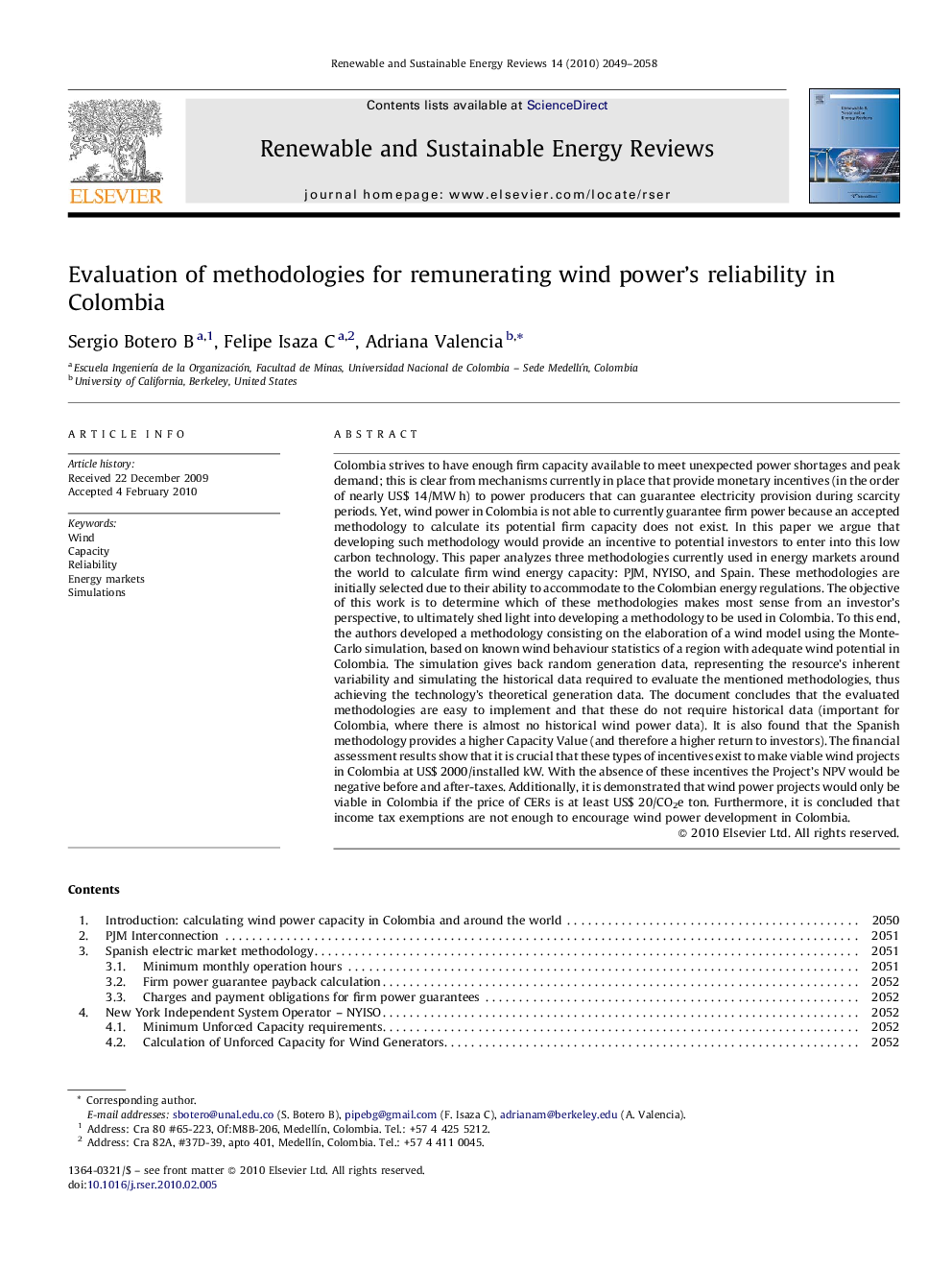| Article ID | Journal | Published Year | Pages | File Type |
|---|---|---|---|---|
| 1751873 | Renewable and Sustainable Energy Reviews | 2010 | 10 Pages |
Colombia strives to have enough firm capacity available to meet unexpected power shortages and peak demand; this is clear from mechanisms currently in place that provide monetary incentives (in the order of nearly US$ 14/MW h) to power producers that can guarantee electricity provision during scarcity periods. Yet, wind power in Colombia is not able to currently guarantee firm power because an accepted methodology to calculate its potential firm capacity does not exist. In this paper we argue that developing such methodology would provide an incentive to potential investors to enter into this low carbon technology. This paper analyzes three methodologies currently used in energy markets around the world to calculate firm wind energy capacity: PJM, NYISO, and Spain. These methodologies are initially selected due to their ability to accommodate to the Colombian energy regulations. The objective of this work is to determine which of these methodologies makes most sense from an investor's perspective, to ultimately shed light into developing a methodology to be used in Colombia. To this end, the authors developed a methodology consisting on the elaboration of a wind model using the Monte-Carlo simulation, based on known wind behaviour statistics of a region with adequate wind potential in Colombia. The simulation gives back random generation data, representing the resource's inherent variability and simulating the historical data required to evaluate the mentioned methodologies, thus achieving the technology's theoretical generation data. The document concludes that the evaluated methodologies are easy to implement and that these do not require historical data (important for Colombia, where there is almost no historical wind power data). It is also found that the Spanish methodology provides a higher Capacity Value (and therefore a higher return to investors). The financial assessment results show that it is crucial that these types of incentives exist to make viable wind projects in Colombia at US$ 2000/installed kW. With the absence of these incentives the Project's NPV would be negative before and after-taxes. Additionally, it is demonstrated that wind power projects would only be viable in Colombia if the price of CERs is at least US$ 20/CO2e ton. Furthermore, it is concluded that income tax exemptions are not enough to encourage wind power development in Colombia.
